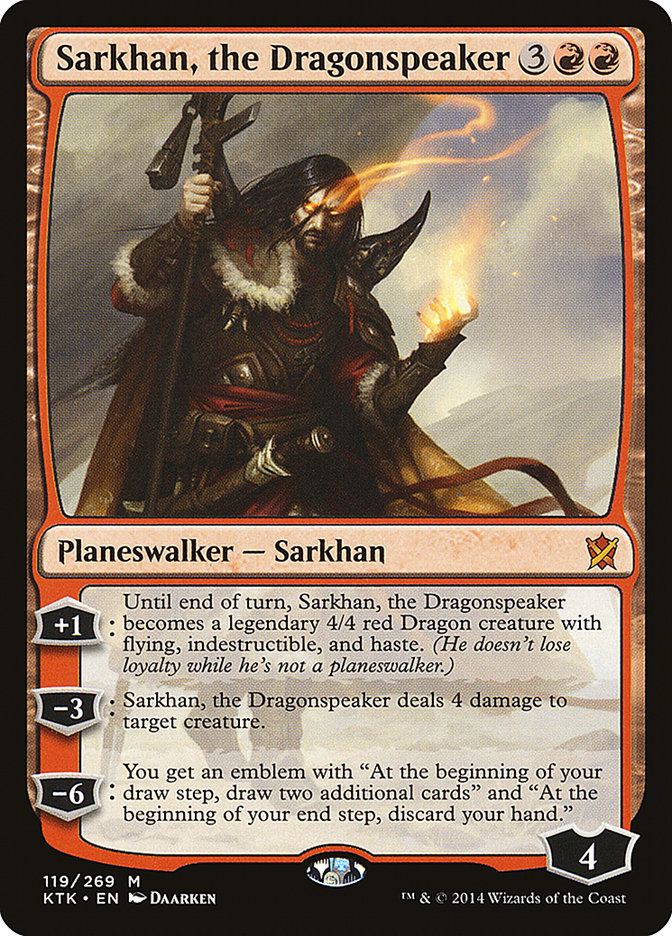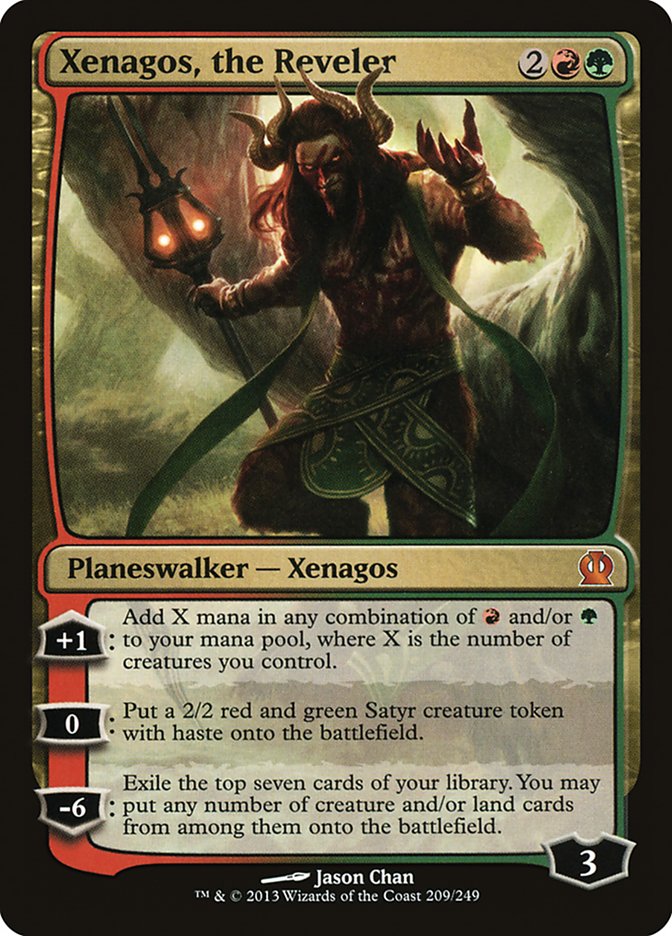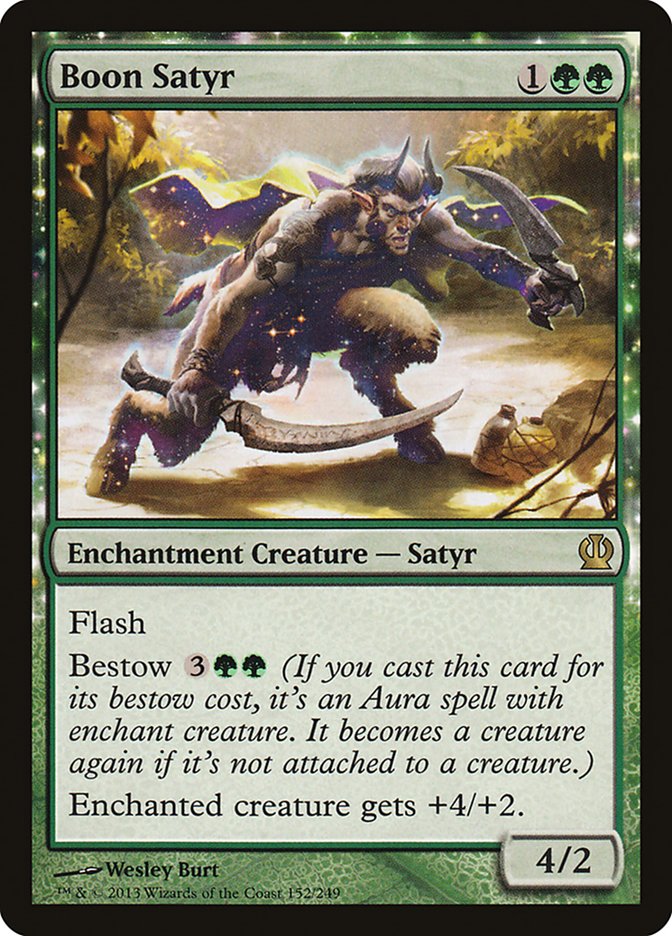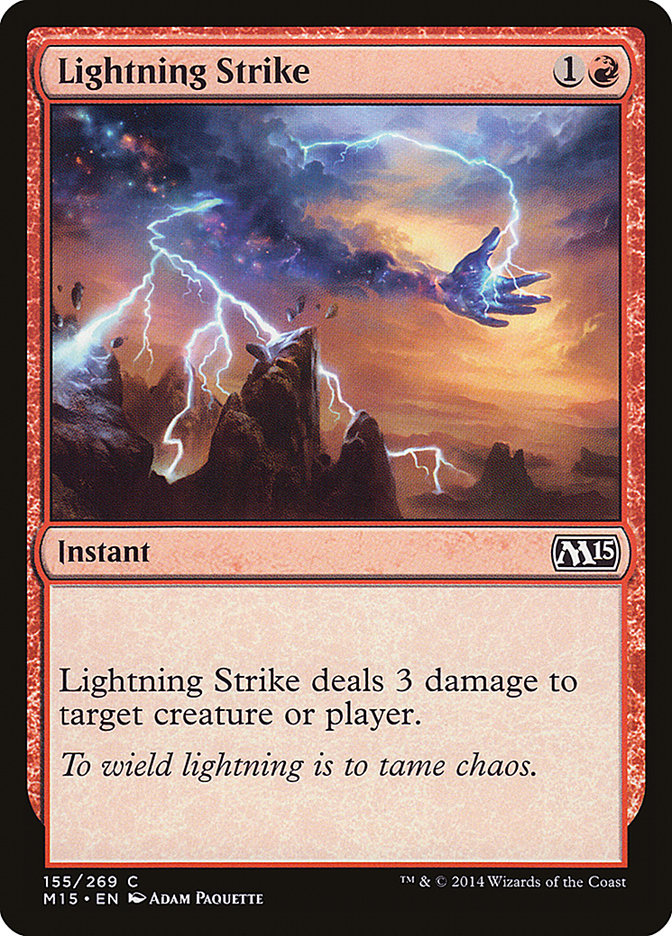I’ve been playing Temur in Standard since Pro Tour Khans of Tarkir. The clan feels like it was designed to do pretty much exactly what I enjoy in Magic,
which is attacking with big efficient creatures. Most of the content I’ve produced since then has been about Temur, and I played Temur in every live
Standard tournament as well.
Over the past few weeks, I was been experimenting with a variety of different Temur decks in an attempt to find the right build for the ever-shifting
Standard metagame. My attempts were met with mixed success, and most recently total failure when I tried to move the deck in an even more midrange
direction with Kiora and the like.
Looking back on that particular build, it seems like a fatally flawed concept from the start. While Kiora certainly performs useful functions against
several popular Standard decks, it’s just fundamentally at odds with Temur’s core strength, which is attacking hard and fast. The more I looked at the
direction I’d taken Temur lately, the less I liked what it was becoming. I’d gone from a hard-hitting beatdown deck to something very solidly midrange in a
format with a bunch of Abzan and Sultai Reanimator decks that are designed to win midrange mirror matches. Ramping into Polukranos and friends just felt
like the wrong place to be in a format where Murderous Cut was among the most popular cards.
So I decided I wanted to go back in the other direction. I wanted to go faster. With so many decks gearing up to fight midrange battles, I decided my best
bet was to try to go underneath them.
But I hadn’t been happy with how my Temur Aggro deck from a month or so ago had been playing, which is why I had shifted to a more midrange build in the
first place. A big part of my problem with that deck had been its inconsistency. The deck had questionable mana, both in terms of its ability to
consistently get the right colors on time and in terms of its ability to survive the amount of damage it dealt to itself with painlands. Elvish Mystic,
while certainly part of some of the deck’s most explosive draws, wasn’t a reliable way to accelerate into Savage Knuckleblade since it only produced green
mana and took green mana to cast. Basic Forest into Elvish Mystic ramped into very little.
That’s when I started wondering if I might be better off sacrificing some of the power of Temur for the speed and consistency of a two-color deck. While
Savage Knuckleblade is extremely powerful, it comes at a high cost. My very first build of Temur before the Pro Tour was designed with ambitions of using
Elvish Mystic to ramp out either Savage Knuckleblade or Goblin Rabblemaster on the second turn. While I ultimately ended up cutting Rabblemaster from that
deck, it’s the one that’s easier to actually ramp to with Mystic. What happens if we go in that direction instead?
I started tinkering with the idea of G/R Aggro and stumbled across Logan Mize’s deck from the SCG Players’ Championship. I liked a lot of what was going on
with his build, especially the focus on three-cost creatures rather than ramping to fours and fives. Logan played the full complement of Rabblemasters
alongside both Fanatic of Xenagos and Boon Satyr, which gave the deck’s Elvish Mystics a lot to do on the second turn.
After playing around with Logan’s deck a bit, I came to the conclusion that I wanted more early creatures. With only Elvish Mystic and Heir of the Wilds to
play in the first couple turns, I often had hands that weren’t able to get out to a fast start, which was entirely at odds with what I felt the deck was
trying to do. I added a few Rattleclaw Mystics, since they can both provide early bodies to attack and help the deck build to its larger creatures more
quickly.
With the additional mana acceleration, I also added a couple copies of Sarkhan, the Dragonspeaker. Sarkhan felt especially well-positioned in the current
Standard format because he lines up so well against Murderous Cut. In my first few games playing with him on Magic Online, he single-handedly killed
several opponents, some of whom sat there with full hands of cards and yet were completely incapable of removing him from the table. The most amusing
instance was against a Sultai Reanimator deck, who had something like eight open mana when I first attacked with Sarkhan, just took the damage, and then
used Sultai Charm to draw and discard. I played an Heir of the Wilds, which ate a Murderous Cut, and then my opponent once again played Sultai Charm to dig
for more answers before dying a horrible death to a flying and indestructible dragon.
I was also very impressed by Xenagos, the Reveler. Xenagos was one of the most powerful planeswalkers in Standard last season, but he suffered at the hands
of Lifebane Zombie. Not only was Lifebane Zombie’s ability generally very powerful against decks that used Xenagos, but it also threatened to kill the
three-loyalty planeswalker in one evasive attack. Earlier this season, Xenagos was all but pushed out of Standard by the popularity of Mantis Rider for
similar reasons. But as Jeskai Aggro has fallen in popularity or transformed into Jeskai Tokens without Mantis Rider, the Reveler’s stock has risen
significantly.
I wasn’t a big fan of Xenagos in Temur Midrange when I tried it a few weeks ago, but G/R Aggro is in a much better position to take advantage of the hasted
2/2 Satyrs, since it deals incremental damage much earlier and more often. The deck is also much more likely to put the opponent in a position where it’s
dangerous to attack Xenagos with Siege Rhino for fear of taking a ton of damage back on the ground. An opening of Elvish Mystic into Rabblemaster or
Fanatic into Xenagos is very difficult for most opponents to handle even with a good draw of their own, in part because of the steady stream of 2/2 Satyrs,
but also because of the explosive turns you can generate with Xenagos’s +1 ability. In one game at Grand Prix Denver, I used the +1 on Xenagos to play
Sarkhan and Crater’s Claws on an opponent’s Siege Rhino on something like turn 5. That’s not a sequence most decks can realistically come back from.
Logan’s deck played the full four copies of Ashcloud Phoenix, which I wasn’t really excited about. I expected both Jeskai Tokens and various Whip decks
with Doomwake Giant to be popular, and the one toughness on Phoenix lines up very poorly against both of those. Phoenix also loses a lot of its luster
against Anafenza, which was also rising in popularity thanks to Abzan Aggro. I decided to hedge a bit and play two copies of Phoenix alongside two copies
of Polukranos. The World Eater isn’t great against either Abzan or Whip decks, but it’s excellent against Jeskai and other aggressive decks, so it felt
like a reasonable place to meet in the middle.
Logan also used four copies of Fated Conflagration in his sideboard, which seemed somewhat excessive to me. Yes, it’s a great answer to Siege Rhino, and
also a fine way to deal with opposing planeswalkers, but it’s very expensive and a purely reactive card, which is the sort of thing I’m rarely happy to
play in an aggressive deck. Given my struggles with Siege Rhino while playing Temur, I could understand wanting a lot of ways to deal with it, but Heir of
the Wilds does a lot of work as pseudo-removal; and Rabblemaster, Stormbreath Dragon, Ashcloud Phoenix, and Sarkhan can all attack through or over a Rhino,
especially with a little help from Boon Satyr.
Speaking of Boon Satyr, this is the kind of deck in which it’s at its best. While I cut it from Temur when I went in a more midrange direction, Boon Satyr
is excellent in an aggro shell. It helps enable ferocious as a four power creature for three and also hits very hard on its own. On top of that, it can
help get in the last few points of damage in an all-out alpha strike to close out the game thanks to the ability to bestow it at instant speed. Cards like
Siege Rhino represent much less of a roadblock for your creatures when many of them fly, and those that don’t can get some Boon Satyr love. Additionally,
Boon Satyr works especially well with Fanatic of Xenagos’s trample ability, letting you put the game away even if your opponent has a swarm of hornets to
block with.
For a while I was playing four copies of Boon Satyr and only three copies of Fanatic of Xenagos, but I swapped those numbers after playing sideboarded
games with the deck against Abzan Aggro and losing repeatedly to Drown in Sorrow. If Drown weren’t a popular sideboard card, I’d absolutely max out on Boon
Satyr before playing any copies of Fanatic, but I wanted to ensure that I had enough creatures that could survive Drown early on.
Ultimately, this is the list I played at Grand Prix Denver:
Creatures (29)
- 4 Elvish Mystic
- 2 Polukranos, World Eater
- 3 Stormbreath Dragon
- 3 Boon Satyr
- 4 Fanatic of Xenagos
- 4 Goblin Rabblemaster
- 3 Rattleclaw Mystic
- 4 Heir of the Wilds
- 2 Ashcloud Phoenix
Planeswalkers (4)
Lands (23)
Spells (4)

The deck played very well, taking me to a 12-3 record at the Grand Prix, including a record of 5-1 against Abzan decks of various stripes. My losses came
to one of my many Abzan opponents, a Jeskai Tokens deck (against which I took nine damage from my own lands in one game thanks to drawing both copies of
Mana Confluence), and Sam Black playing his R/W Tokens deck.
While I did well in the tournament, and particularly well against Abzan, I feel like the deck could definitely be improved, especially for the field at the
event, which I expect will likely influence the format significantly going forward. My prediction of the metagame was quite flawed. I expected a lot of
Whip of Erebos decks, but they were almost nowhere to be seen. Abzan Aggro was by far the most popular deck at the event, especially among top players.
While my deck performed well against them overall, I felt like I got rather fortunate to do as well as I did in the matchup.
The biggest change I would make would be to add Lightning Strike to the deck. I played with only Crater’s Claws for removal because I expected a much more
control oriented metagame where Lightning Strike is very weak. One of the surest ways to lose to control with an aggressive deck is to draw too many cards
that aren’t actually threats, so your opponent can completely stop your offense with their removal. When I was playing Temur, I found that the number of
copies of Lightning Strike and Crater’s Claws that I drew pretty much directly correlated with how often I lost against decks like U/B Control or Abzan. I
wanted to avoid that phenomenon with my G/R deck at the Grand Prix, so I eschewed Lightning Strike altogether.
There were two problems with this plan. The first of them was obviously that I got the metagame entirely wrong, and rather than rotting in my hand as a
liability, Lightning Strike would have lined up extremely well against all of the Fleecemane Lions out there. While I won against almost all of my Abzan
opponents, many of the games were serious struggles that could have gone either way. If I had had Lightning Strike for my opponent’s Fleecemane Lions
though, many of them would have been absolute blowouts in which my opponents would have stood little chance.
The second problem is that Goblin Rabblemaster plays much better with spells than with other creatures. Over the course of the tournament, Rabblemaster was
arguably the worst card in my deck. I probably ran a bit below expectation with my Rabblemaster nut draws, since I only played it on turn 2 off of an
Elvish Mystic once. That said, even time I got them into play, I often found my Rabblemasters in awkward spots where they couldn’t attack effectively
because my opponent could easily block them on the ground with something like a Seeker of the Way. If I’d had Lightning Strike in many of these spots
though, I could have cleared a path and started piling up both damage and goblin tokens that I could ride to victory.
Lightning Strike also allows the deck to play better from behind, which is particularly important in sideboarded games in which your opponents have access
to better removal against your deck, like Drown in Sorrow. Additionally, it plays well with Xenagos, which is an excellent tool against removal-overload
plans that can be difficult to support without removal of your own. Much like I switched from Boon Satyr to Fanatic as a four-of in the maindeck in
anticipation of Drown in Sorrow after sideboarding, playing Lightning Strike helps anticipate the Xenagos sideboard plan against decks like Abzan Aggro,
against which your creatures aren’t as reliable due to their heavy removal package after sideboarding.
And while it didn’t perform well at the Grand Prix, W/U Heroic had an excellent showing at the Open Series in Columbus this past weekend, taking four of
the top nine slots, including the title in the hands of Joe Lossett. I’ve actually found G/R Aggro to perform very well against Heroic thanks to its
ability to take an aggressive stance itself and force the W/U deck on the back foot. Heir of the Wilds shines here, since deathtouch means it doesn’t care
about how big your opponent’s creatures get. Additionally, Lightning Strike is among the best cards you can include in your deck against Heroic, since it
can double as a cheap removal spell for their early creatures as well as a way to close the game out if you get ahead.
If I were to play G/R Aggro in another tournament today, this is what it would look like:
Creatures (26)
- 4 Elvish Mystic
- 3 Stormbreath Dragon
- 3 Boon Satyr
- 4 Fanatic of Xenagos
- 4 Goblin Rabblemaster
- 2 Rattleclaw Mystic
- 4 Heir of the Wilds
- 2 Ashcloud Phoenix
Planeswalkers (4)
Lands (23)
Spells (7)

I’ve gone with the full four copies of Lightning Strike here, even cutting the fourth Crater’s Claws. While Crater’s Claws is very powerful in this deck, I
actually found that it could be difficult to consistently enable if your opponents don’t pay tribute on Fanatic of Xenagos. It’s also much less effective
against three toughness creatures like Fleecemane Lion, since you can’t play a Boon Satyr or Fanatic off of a mana creature on turn 3 and fire off a
Crater’s Claws to kill it like you can with Goblin Rabblemaster and Seeker of the Way. Also, as mentioned earlier, Lightning Strike is also still effective
when you’re behind, which is something that often is not true with Crater’s Claws.
To fit the extra removal spells, I culled some of the more expensive creatures from the deck. Polukranos has moved to the sideboard, where he waits for
matchups against decks without black removal, where he shines. So many of the most popular decks in Standard right now are packing cards like Murderous
Cut, Abzan Charm, and Hero’s Downfall, and it’s hard to justify spending four mana for a creature that dies to all of them without having any impact the
turn it hits the battlefield.
Joining Polukranos in the sideboard is another copy of Xenagos, providing the option to go up to the full four copies after sideboarding. This is in part
due to the success of U/B Control in Denver. Xenagos is the best possible card against removal-heavy control decks, outshining Nissa due to its lower cost
and additional mana production ability. While four copies may seem excessive, you always want to draw it against them, and often in multiples to ensure you
land one through the wall of countermagic.
I’m somewhat torn between Arc Lightning and Magma Spray in the sideboard against aggressive decks. Previously I played both, but now I only have room for
one or the other thanks to fitting Polukranos. With Lightning Strike in the maindeck, I feel like the role of cheap spot removal is covered, and Magma
Spray is less important, though it is a clear upgrade in many matchups. The biggest argument in Arc Lightning’s favor is its effectiveness against token
decks, allowing you to clear out an entire Hordeling Outburst with a single card, or a Rabblemaster and the goblin it brought with it.
All told, I think G/R is a strong choice for Standard right now. Curving out with efficient creatures is a great place to be in a format where your
opponents are playing lands that enter-the-battlefield tapped and dealing damage to themselves with cards like Thoughtseize. While Siege Rhino may seem
like an insurmountable obstacle for decks looking to win by attacking, the combination of evasive creatures and Crater’s Claws can break through the
seemingly impenetrable Abzan fortress.
Besides – you get to play with dragons and a planeswalker that turns into a dragon. How can I possibly pass that up?





